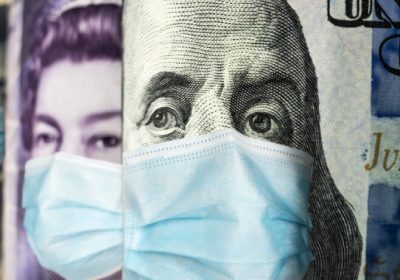
- Author: Stephen Koukoulas
- Posted: December 13, 2021
2022: The Year ahead for the Economy & Policy
2021 is ending with concerns about new variants of the coronavirus, rising inflation, the prospects for interest rate hikes, labour shortages and the Federal election, which is likely for May 2022.
The Australian economy is, nonetheless, in good shape. The recovery from the September quarter lockdowns is robust with leading indicators including job vacancies, household wealth, savings, business investment intentions and the weaker Australian dollar all positive for growth. The fact that both monetary and fiscal settings are still very stimulatory will work to support the economy in the new year.
The surge in house prices is tapering. This is a good thing as it is orderly and without any disruption to markets and the economy.
In Australia and around much of the world, financial markets are pricing in a series of interest rate increases through 2022 as inflation remains elevated for longer. The expected interest rate increases are relatively modest – around 100 to 150 basis points in the next 18 to 24 months, with the potency of monetary policy changes seen to be strong given the elevated levels of household debt.
Key economic issues for 2022
While variants of coronavirus remain a major uncertainty and are a threat to the economy, the fundamental position of the Australian economy is strong. Economic growth will be driven by a welcome combination of consumer spending and business investment.
Consumer finances are in a good shape which is a precursor for robust growth in household consumption expenditure. Household savings are high and will provide a war-chest of ready funds for spending. At the same time, there remains a strong wealth effect from the housing market and general strength in financial assets, even though in recent months there has been additional volatility in global stock markets.
Labour market conditions are also supportive of consumer spending with wages growth picking up after many years of weakness. The broad economic recovery is likely to see the unemployment rate head to multi-decade lows around 4 per cent by the end of 2022. Such is the extent of the skills shortages that the unemployment rate could dip towards 3.75 per cent in 2023.
The availability of workers is therefore looming as a major constraint for business. Simply put, workers are hard to find.
This has the potential to hold back the recovery and is likely to see a material lift in wages growth through the course of 2022, even as international borders are reopened for immigration and temporary workers arrive to fill some of the skills shortages.
Business investment is now strong. According to the ABS business expectations survey and results from the NAB business survey, business investment is poised to boom 2022. This means there will be a sustained lift in investment in machinery, equipment, IT, buildings and structures. Growth of 20 per cent is expected which will be one of strongest years on record, albeit following the weakness that resulted from the lockdowns in 2020 and 2021.
These very strong elements of the growth outlook in 2022 will be only partly offset by pockets of weakness – dwelling construction is likely to edge lower as the effect of the stimulus measures fade, while net exports are likely to reduce GDP by around 1 percentage point in 2022 as import volumes surge on the back of the lift in equipment and machinery investment, most of which is produced overseas.
The bottom line is for GDP growth to rise by over 5 per cent in 2022 which would mean the economy would revert to its pre-COVID growth path by the June quarter.
Inflation
A stronger economy and increasing shortages of skilled labour will fuel a lift in both inflation and wages growth. This is the overwhelming consensus, including from the RBA.
There is a more intense debate is about the extent of the upswing. The RBA, for now, expects only a gentle lift. It does not see annual wages growth exceeding 3 per cent until late 2023 at the earliest and as a result, inflation is not expected to exceed the top end of the 2 to 3 per cent target range until then.
This is a conservative view.
Many market economists are looking for an earlier and more observable lift in inflation. Based on a range of survey data, underlying inflation is likely to surprise the RBA and exceed 3 per cent in the first half of 2022. Global inflation rates have been accelerating to multi-decade highs and this will flow into Australia, a point evident in inflation expectations.
Economic policy issues for 2022
Both monetary and fiscal policy will be at the forefront of economic management in 2022.
Despite the RBA’s current guidance that it is unlikely to adjust official interest rates prior to 2024, it will be reactive to news on inflation, wages and the labour market. The debate within the RBA and in markets is the trajectory of the improvement in those indicators. If inflation and wages increase more than the RBA is currently forecasting, which appears a very high probability, interest rate hikes will be delivered earlier and more aggressively than the market is pricing.
A useful example of what is likely for Australia is the experience in New Zealand where the RBNZ has recently hiked its cash rate to 0.5 per cent and signalled that a series for further hikes are likely in coming months as it deals with rising inflation.
Fiscal policy pressures will be scrambled by the noise and politicking around the imminent Federal election campaign.
The budget deficits are still large and government debt is on track to exceed $1 trillion. For now, this is not a concern. But if the economy registers solid growth over the next 12 to 24 month, there will be a strong case for whichever side wins the election to start to repair the budget – in other words, moving more quickly towards a balanced budget.
Any fiscal tightening that has the government sector making a lesser contribution to the economic growth will ease some of the pressure on the RBA to hike rates.
The election will also focus on the environment, the path to zero net carbon emissions, workplaces skills and education.
Housing ends 2021 with some evidence of a cooling in activity
The past year has seen broadly based and very strong increases in house prices. Annual price increases in excess of 20 per cent were common across most cities and the regions.
There are some signs that price growth is cooling, in part due to a lift in supply as new listings surge, in part due to interest rate increases for fixed rate mortgages, tighter credit and ‘sticker shock’ which is the effect of high prices deterring potential buyers from entering the market.
The history of house prices shows that when 20 per cent annual gains emerge, they are quickly followed by small falls of around 5 per cent in the following year and after that, there is often a period of 3 to 5 years where prices are broadly flat. This is the likely scenario for house prices in 2022 and beyond.
A good year ahead
All up, the outlook for 2022 is positive. While coronavirus risks remain elevated, the pre-conditions for a year of strong growth are in place. But be alert to a number of important economic issues – monetary and fiscal policy tightening are in the offing and the election could throw up some micro policy issues that will need businesses to be agile is response to change.








